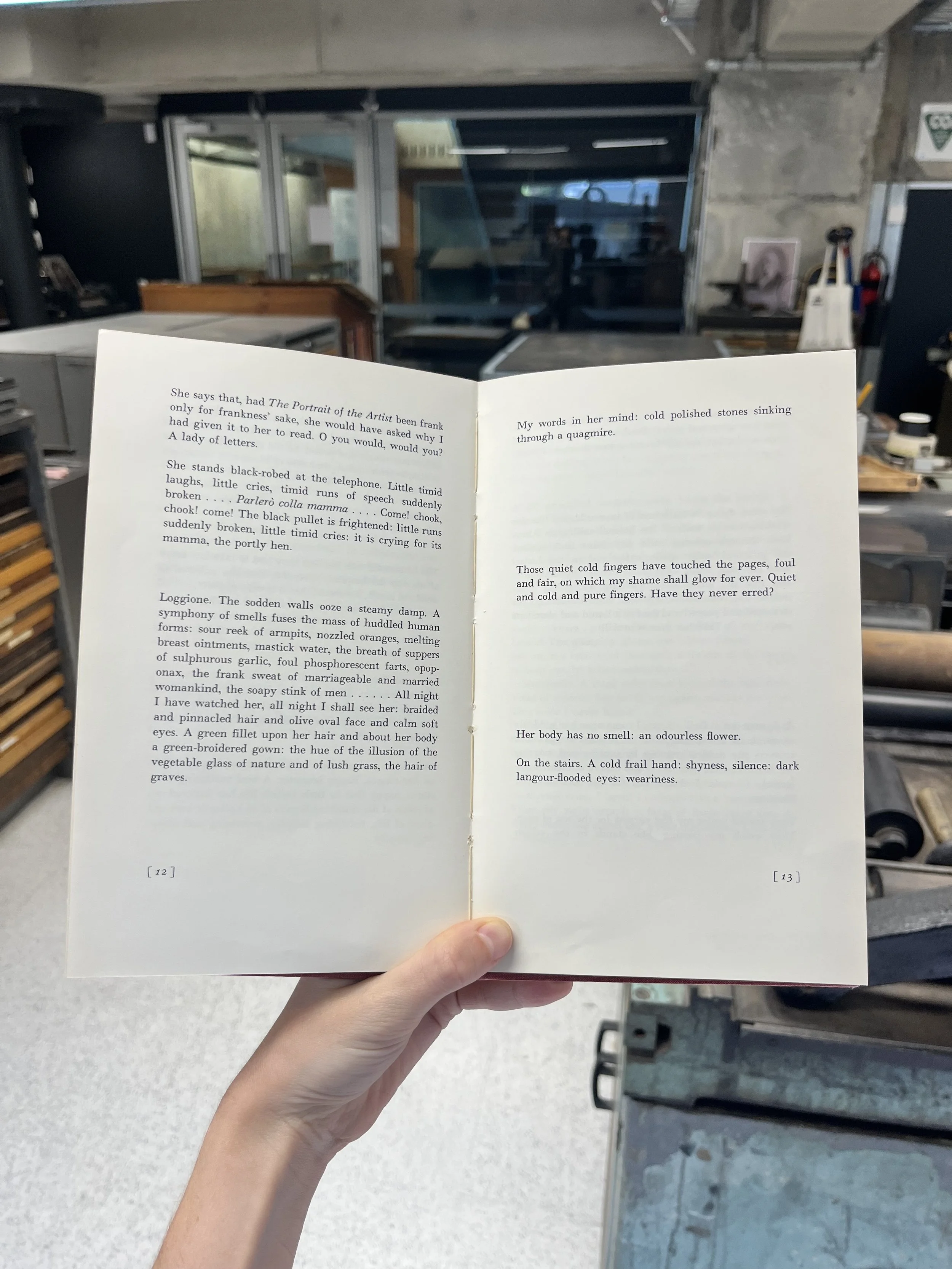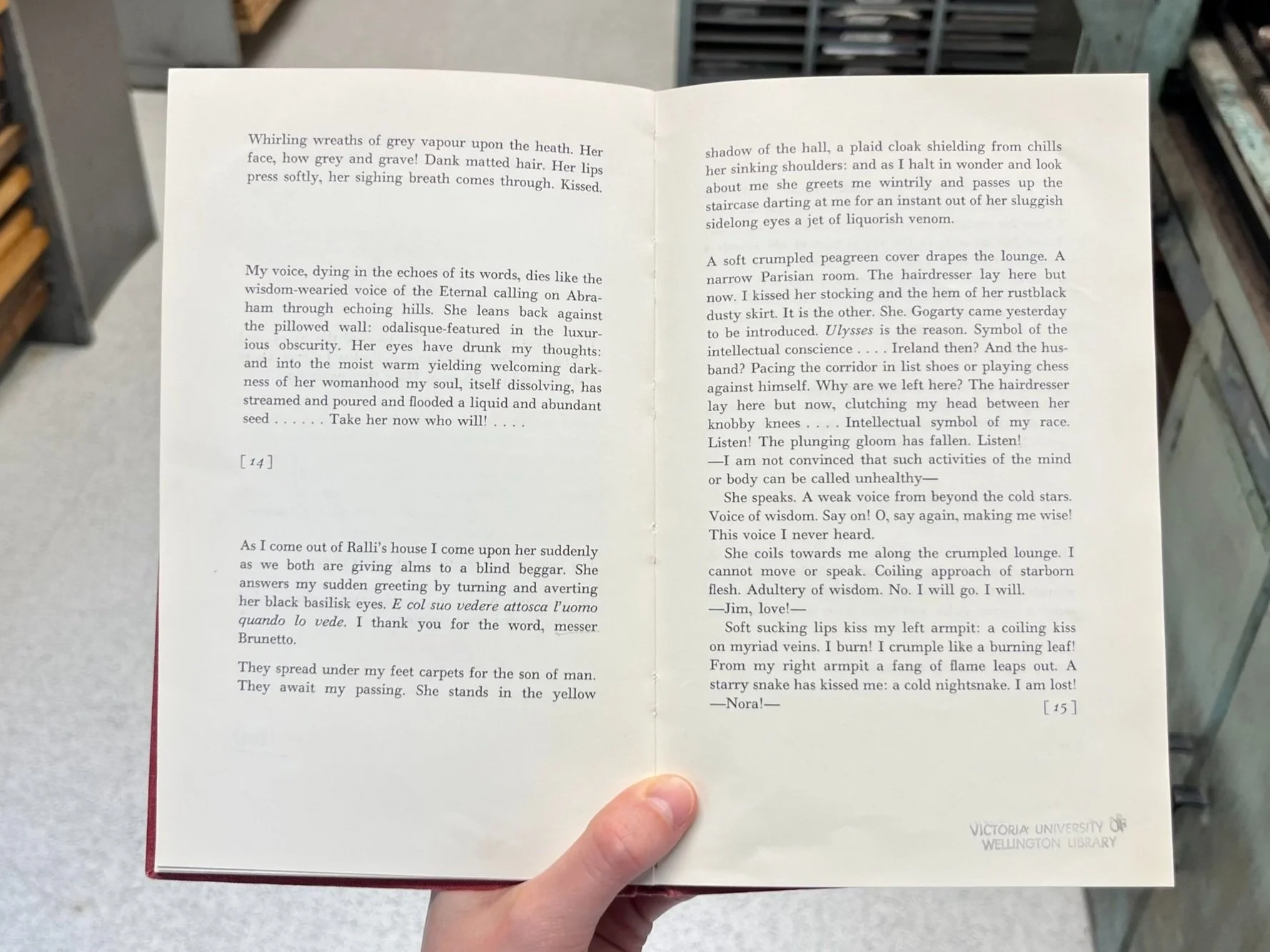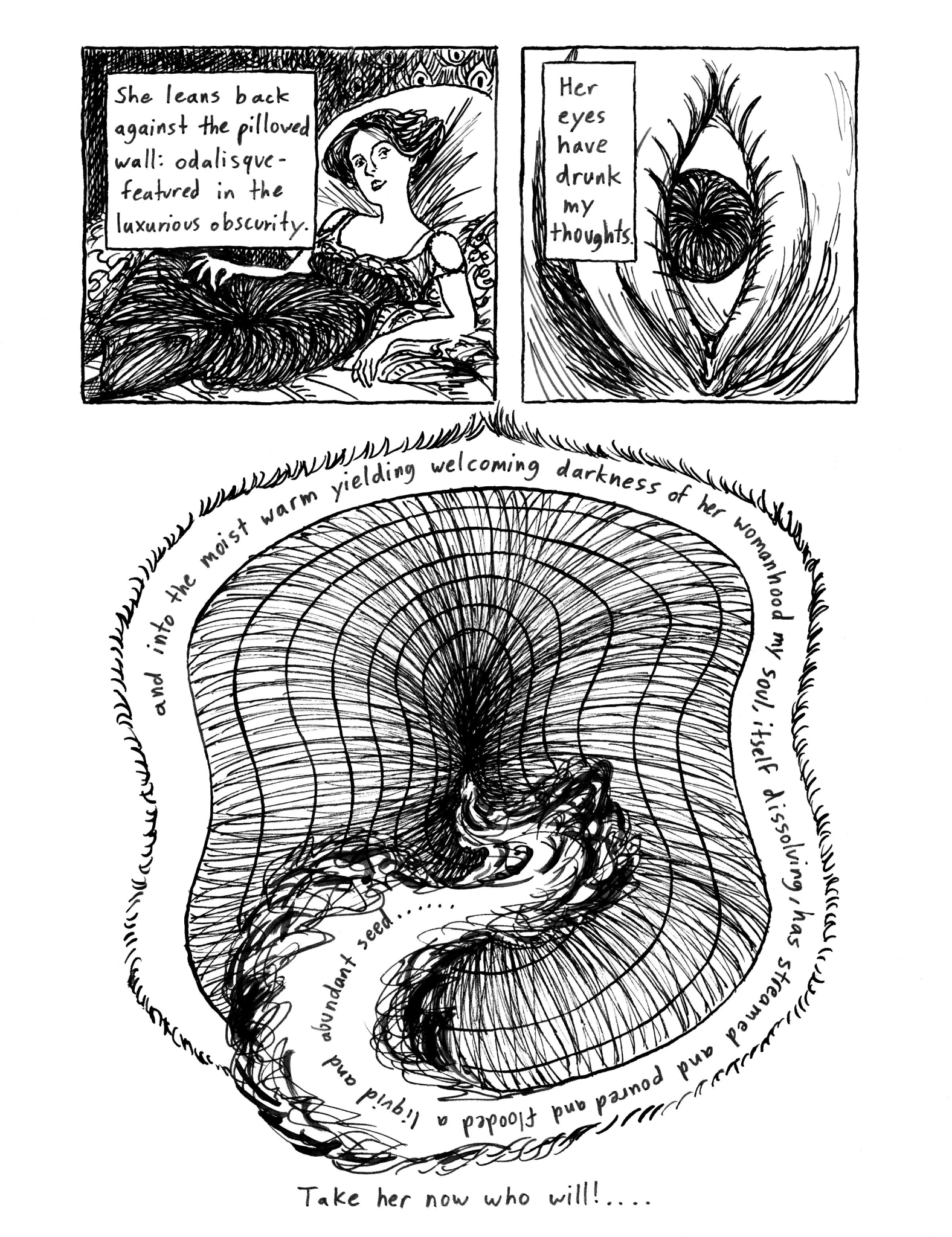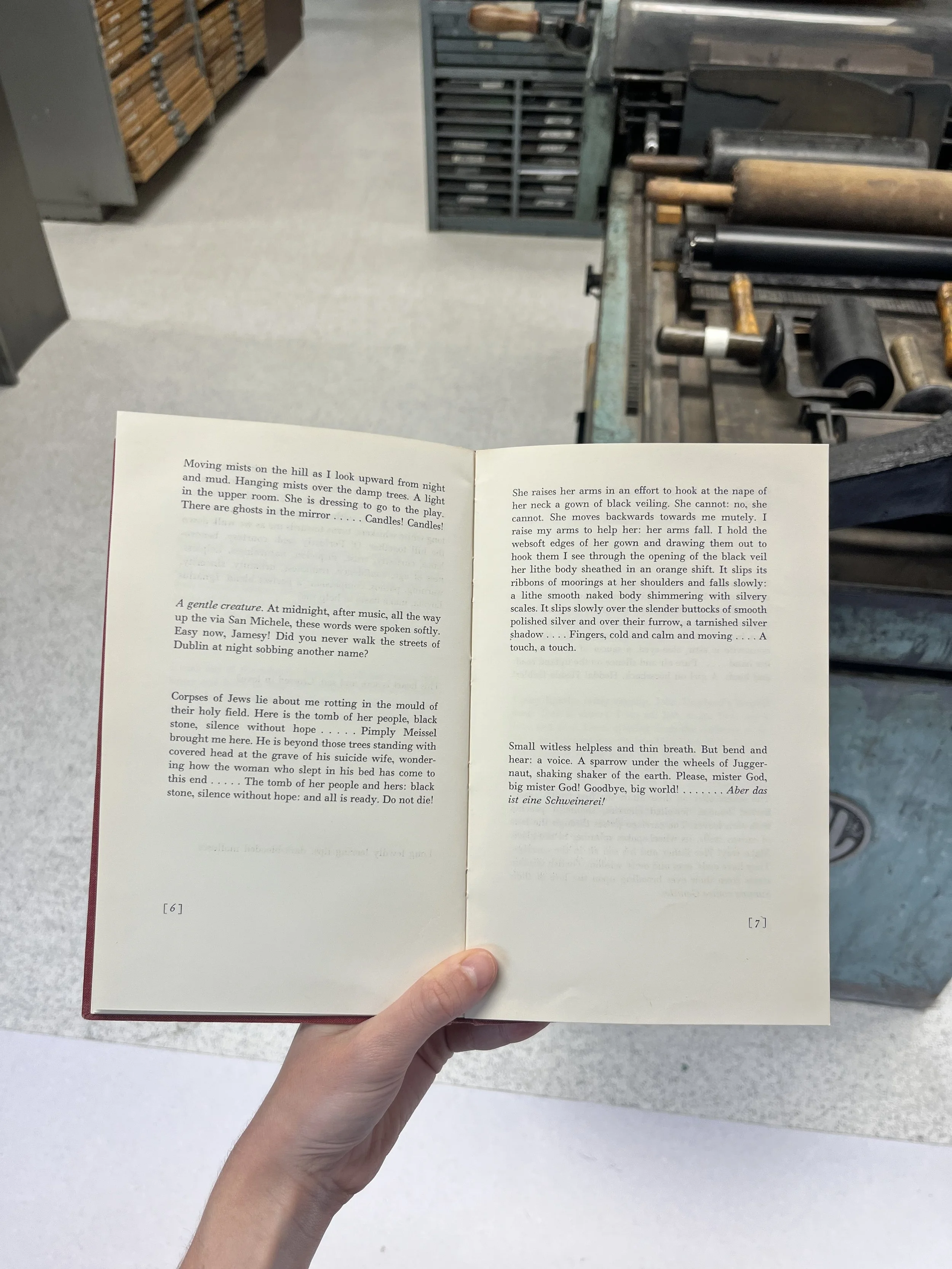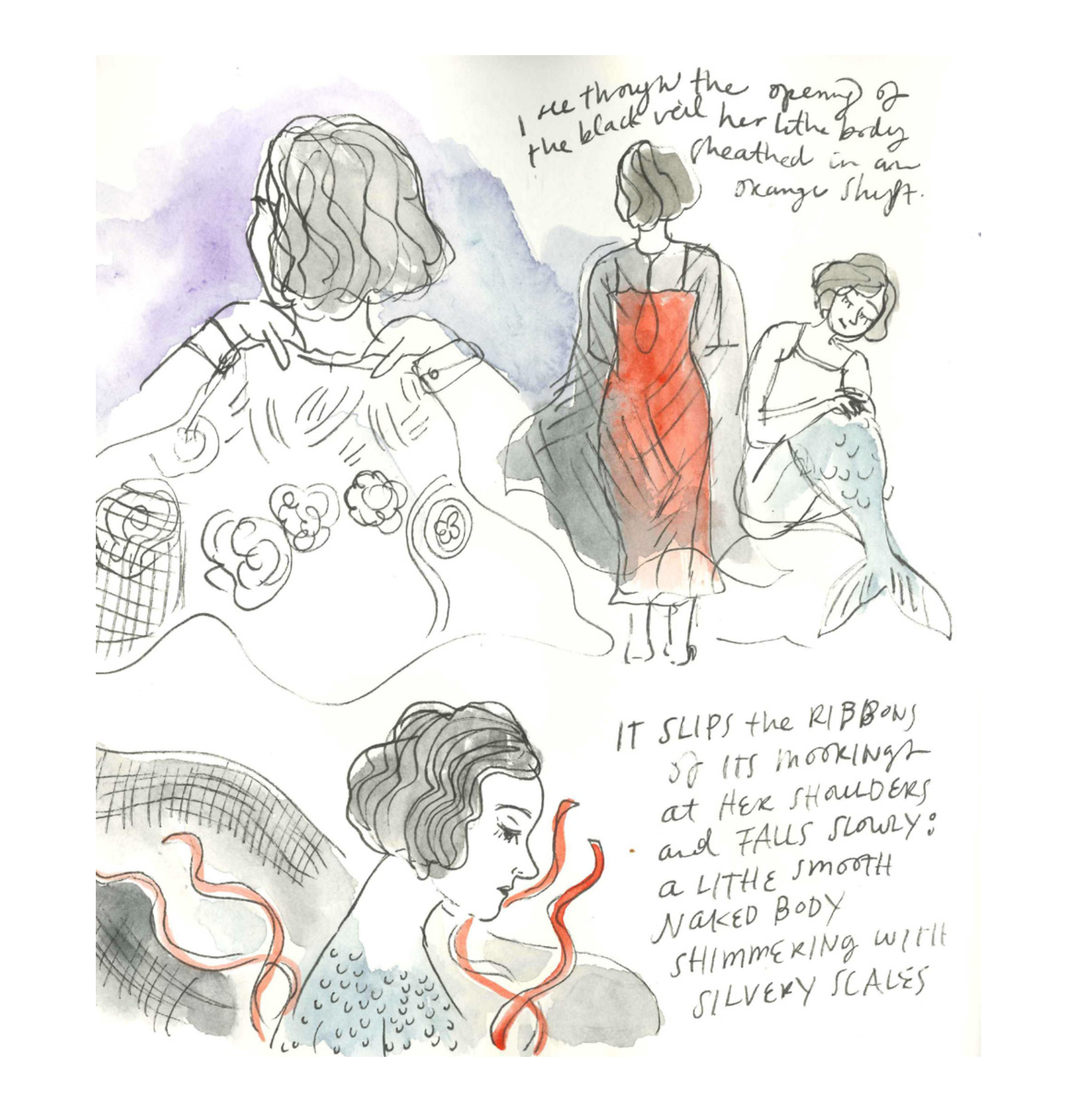Many of our contributors made interesting creative decisions when translating Joyce’s original work. There are select passages that conjured vivid imagery in our contributors’ responses to the text, and supported their own experimentation. One of these is the passage that spreads across page 13-14 of ‘Giacomo Joyce’.
Joyce, Giacomo Joyce, page 13
Joyce, Giacomo Joyce, page 14
JP
ED: In response to ‘Giacomo Joyce’ page 14, you draw a close-up of the woman’s eye turned 90 degrees to present as a vertical opening, which then cascades to a textured, suctioning orifice by which the author’s words are penetrating in a hairy, liquified stream. What about this imagery did you feel served your visual narrative? How does the contrast between this and the soft, muted, gentle tone of the previous page’s (page 13) illustration serve your portrayal of the inner workings of the text?
JP: Generally speaking, the text presents various aspects of Giacomo Joyce’s fantasy vision of his student. The soft charcoal drawings on page 13 are intended to be somewhat sentimental and nostalgic.
The much more energetic and sharper line drawings on the next page are meant to evoke erotic frenzy. Partly I suppose the instinctual decision to render this page in black and white was conditioned by its evocations of the “luxurious obscurity” and “welcoming darkness.” This passage seems to me to represent the most libidinal, openly masturbatory aspect of this obsession. It also to my mind has a kind of dizzied, voraginous quality to it that I tried to capture in all three panels on this page.
A passage that stood out to Sarah Laing was on page 7.
Joyce, Giacomo Joyce, page 7
SL
ED: Drawing from page 7, I like how you decided to literally draw the student as a fish, or merwoman, with scales and a tail. What about this imagery did you feel compelled to bring to life? What does it tell us about this student, or the author’s interpretation of her? The last image of this lot shows the student with a solemn, demure expression on her face. At this stage in your process, did you feel you were starting to feel emotional notes come through that you could reflect in these moments of expression?
SL: I was struck by the description of scales – women don’t have scales – so obviously Joyce was trying to signal something here. Was he trying to infer that she was dangerous, that he might be seduced by her siren song? Mermaids are quite erotic, appearing unclothed on top of rocks (but I’ve drawn her in a singlet.) Or is he trying to suggest that there is something a little unworldly, fishy, about her?
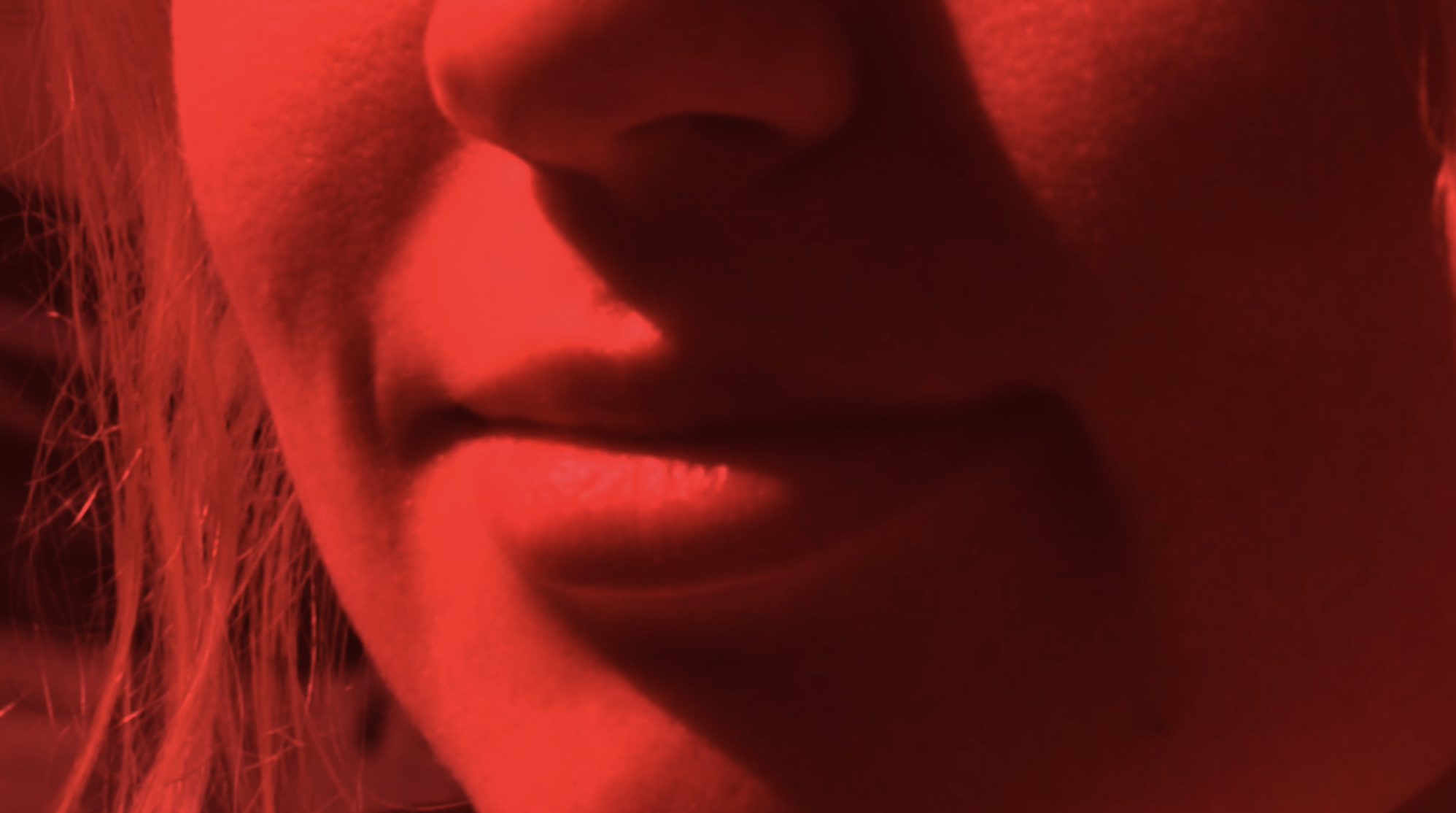

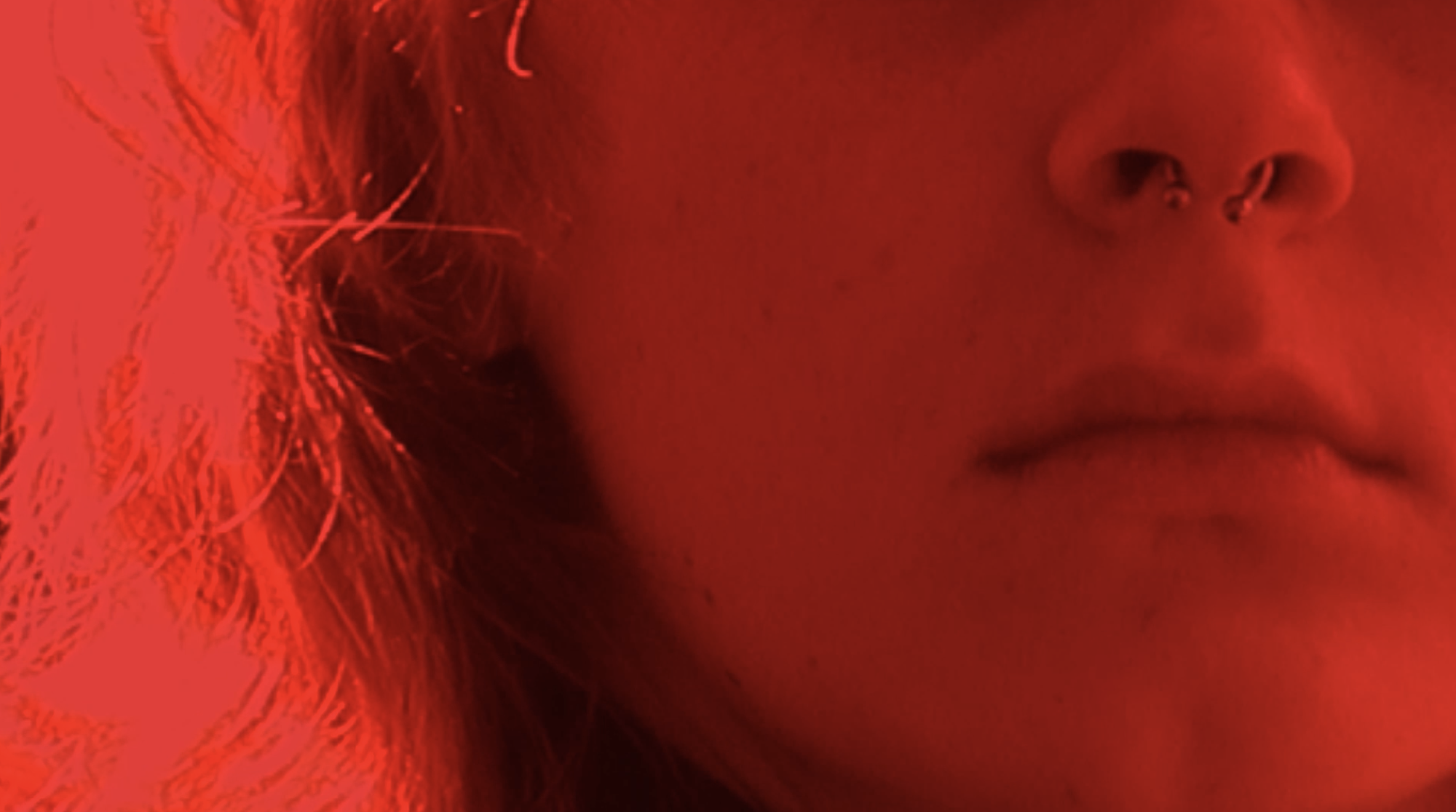
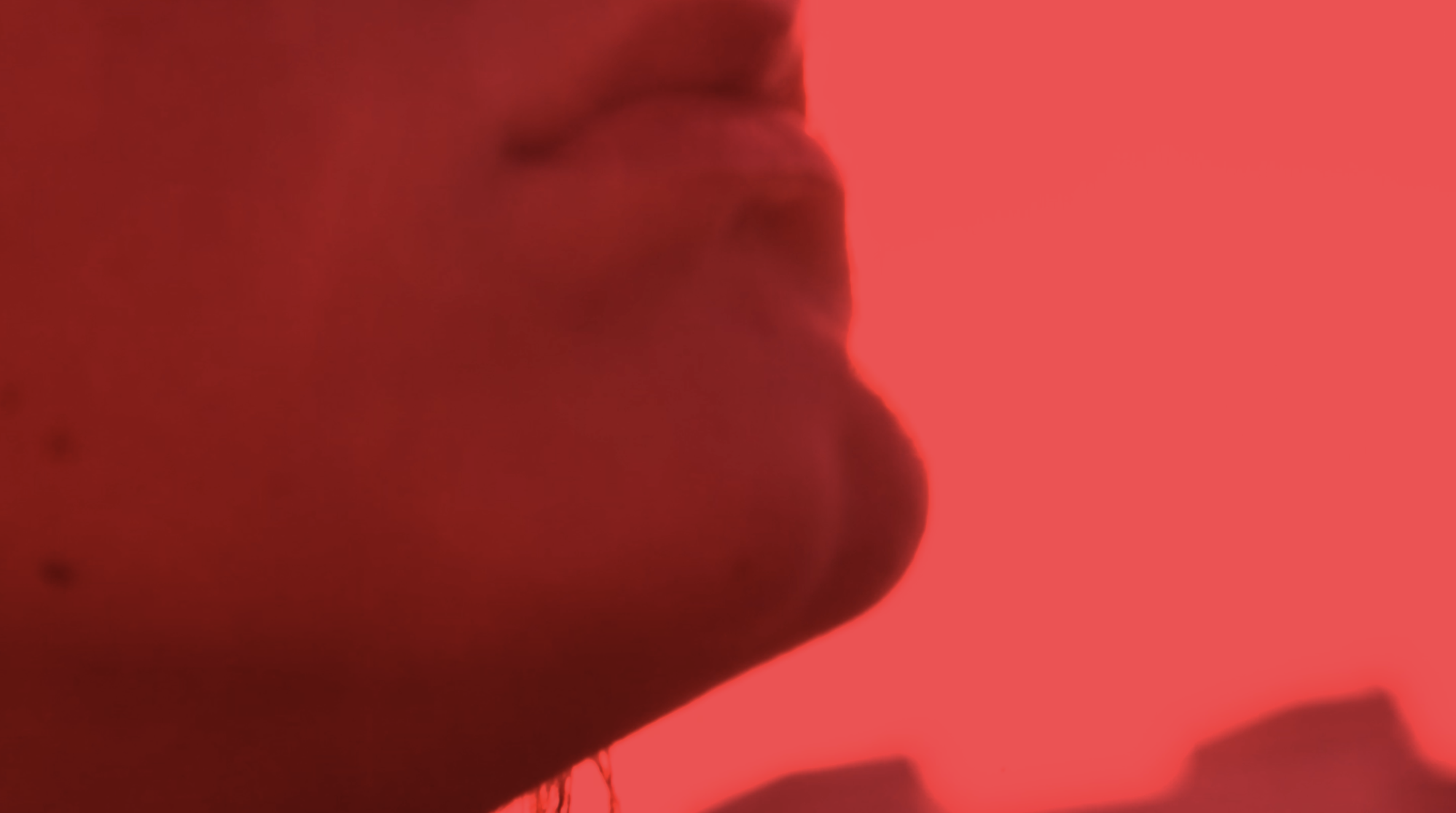
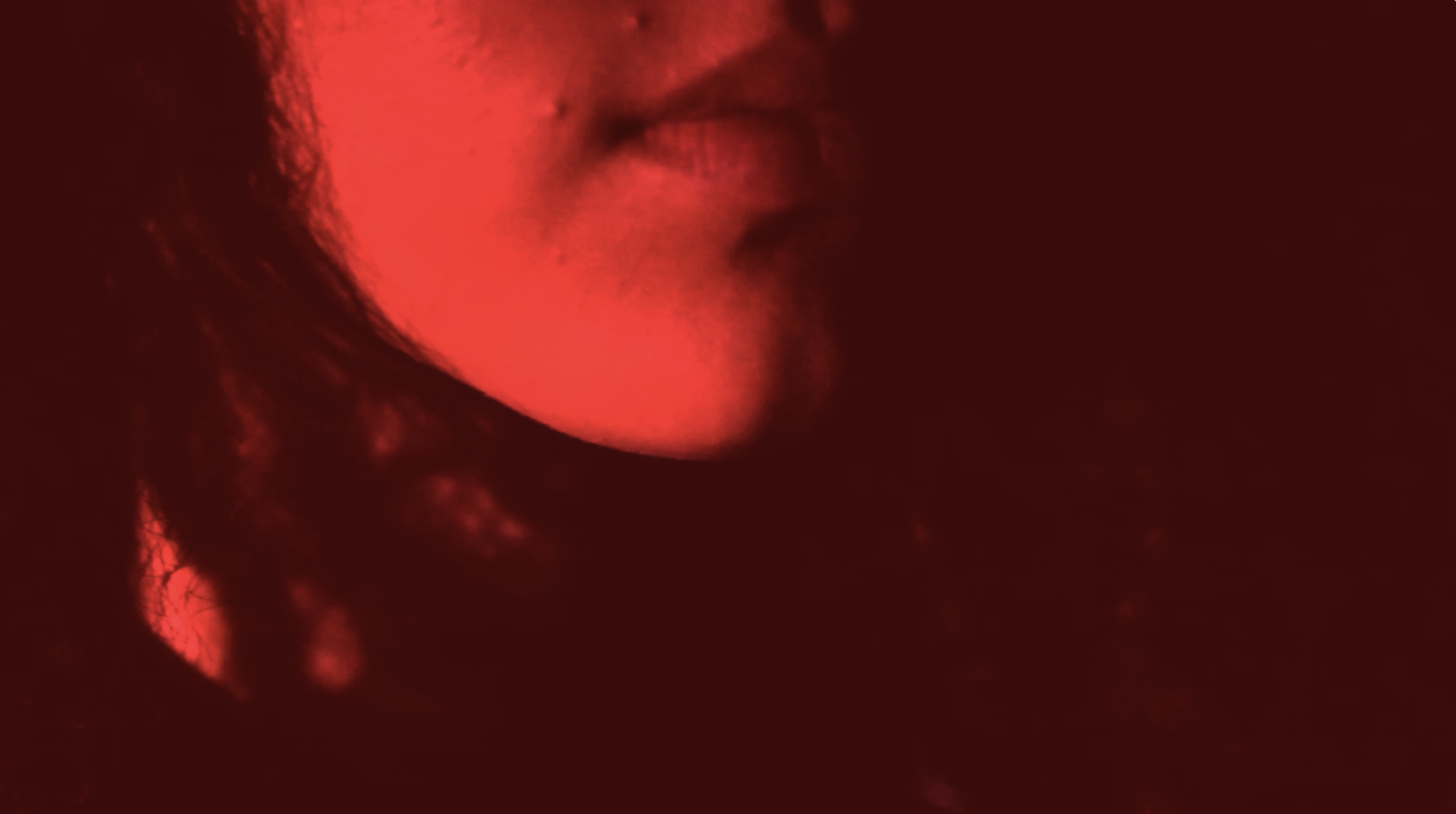

TST
ED: Similar to your approach with sound design, you achieve a sense of fragmentation in your editing and cinematography that nods appropriately to Joyce’s rendering of fragmented written pieces in Giacomo Joyce. In your cinematography, and particularly for the depiction of your female subjects, you utilise extreme close-ups to isolate and fracture components of the face and body. What does the imagery of the face symbolise to you, especially when deconstructed in this manner?
TST: The face is a place where we can build the identity of an individual. That's where the fragments of the faces come into play: especially lips and eyes and nose and ears. Eyes in particular go back to this question of looking. That's why eyes are always the most important image that comes out of the body, and that is driven into the entire film. The imagery is mostly to connect to the text and to dissect and participate in the classic male gaze. These faces symbolize to me when deconstructed, a broken body. It's a sad aspect of trying to isolate and to break apart the wholeness of a person.
❦
It all begins with an idea —
Interpretation entails combustion: exact meaning, like an intrusive hornet who has penetrated the beehive of sense, must be overheated into other forms of exactness.
